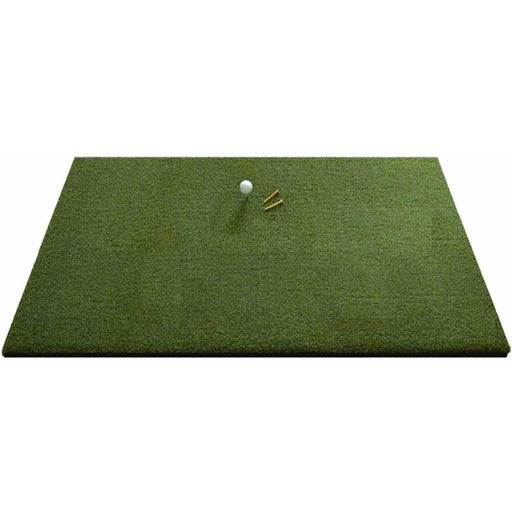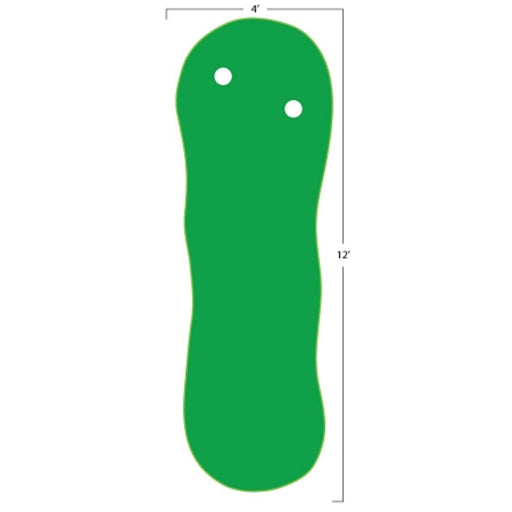
Unveiling the Secrets of Stimp Meters: Your Guide to Speeding up Your Golf Game
If you're an avid golfer, you've probably heard of the term "Stimp meter" being tossed around the course or during televised golf events. But what exactly is a Stimp meter, and why is it important in the world of golf? In this blog post, we'll delve into the fascinating world of Stimp meters, exploring what they are, how they work, and why they play a crucial role in shaping your golfing experience.
What is a Stimp Meter?
A Stimp meter, short for "Stimpmeter," is a specialized device used in golf to measure the speed of a golf course's putting greens. It was invented by Edward Stimpson in the 1930s and has since become an indispensable tool for golf course superintendents, golfers, and tournament organizers. The Stimp meter provides a standardized way to quantify the speed of a green, allowing golfers to adapt their putting technique accordingly.
How Does a Stimp Meter Work?
A Stimp meter consists of a flat, tapered ramp with a groove down its center. Golf course maintenance personnel use it to roll a golf ball down the ramp, measuring how far the ball travels after it leaves the device. This distance, typically measured in feet, is known as the "Stimp reading" or "green speed."
Here's how a Stimp meter works:
- Preparation: The green's surface is mowed to a uniform height, and any debris or moisture is removed to ensure accurate measurements.
- Positioning: The Stimp meter is placed on the green, with its narrow end touching the putting surface.
- Rolling the Ball: A golf ball is positioned at the groove's starting point, and the Stimp meter is gently lifted to allow the ball to roll down the ramp.
- Measurement: The distance the ball travels after leaving the Stimp meter is recorded as the Stimp reading.
- Multiple Measurements: To account for variations in green speed across the putting surface, several measurements are taken from different locations on the green, and an average reading is calculated.
Why are Stimp Meters Important in Golf?
- Standardization: Stimp meters provide a standardized method for measuring green speed. This consistency is crucial for maintaining fairness and competitiveness in golf, especially during tournaments.
- Strategy: Golfers use Stimp readings to adapt their putting strategy. Faster greens require a gentler touch, while slower greens may require a more forceful stroke.
- Course Management: Golf course superintendents use Stimp readings to manage and maintain consistent green speeds, ensuring a high-quality golfing experience.
- Tournament Setup: Organizers of golf tournaments use Stimp readings to set up greens to their desired speed, creating challenges and excitement for professional golfers and spectators.
Interpreting Stimp Readings
Stimp readings can vary widely, with professional golf courses often aiming for green speeds between 10 to 14 feet on the Stimp meter. Faster greens challenge golfers with delicate touch, while slower greens may require more aggressive putting.
It's essential to remember that Stimp readings are just one aspect of a green's complexity. Factors like slope, grain, and moisture levels also influence how a green plays.
The Speed of the Course
While Stimp meters may seem like simple devices, they play a significant role in the world of golf, influencing how courses are maintained and how golfers approach their putts. Understanding Stimp readings and their implications can give you a competitive edge and a deeper appreciation for the intricacies of the game. So, the next time you step onto the green, take a moment to appreciate the role that Stimp meters play in shaping your golfing experience.
- Browse our putting greens

Have Questions About Golf Simulators?
Our expert team is here to help you find the perfect golf simulator for your needs.
Featured products
-
SkyTrak+
Original price $2,995.00 - Original price $3,145.00Original price$2,995.00 - $3,145.00$2,995.00 - $3,145.00Current price $2,995.00Introducing the SkyTrak+ Launch Monitor: Unmatched Accuracy and Advanced Features Experience a new level of precision and innovation with the SkyTr...
View full details -
ProTee Majestic Simulator Package
Original price $9,618.00 - Original price $13,848.00Original price$9,618.00 - $13,848.00$9,618.00 - $13,848.00Current price $9,618.00ProTee Majestic Golf Simulator Package: Elevate Your Indoor Golf Experience Transform your home or business into a golfer’s dream with the ProTee M...
View full details -
Eagle Golf Mat
Original price $370.00 - Original price $1,130.00Original price $370.00$370.00$370.00 - $1,130.00Current price $370.00Introducing the Eagle Golf Mat: The Ultimate Golf Experience Are you passionate about golf and demand nothing but the very best in your practice eq...
View full details -
Retractable HomeCourse® Golf ProScreen 180
Original price $2,299.00Original price $2,299.00 - Original price $2,299.00Original price $2,299.00Current price $1,999.00$1,999.00 - $1,999.00Current price $1,999.00HomeCourse® Golf ProScreen 180 HomeCourse® Golf ProScreen 180 is a retractable golf screen and enclosure. HomeCourse® Golf ProScreen 180's ballisti...
View full details -
The Augusta V2 4'x12' 2 Cups
Original price $399.00Original price $399.00 - Original price $399.00Original price $399.00Current price $329.00$329.00 - $329.00Current price $329.00The Augusta is one of Big Moss’ traditional models. It offers unmatched versatility for teaching and year round practice. Make a long-term investme...
View full details





